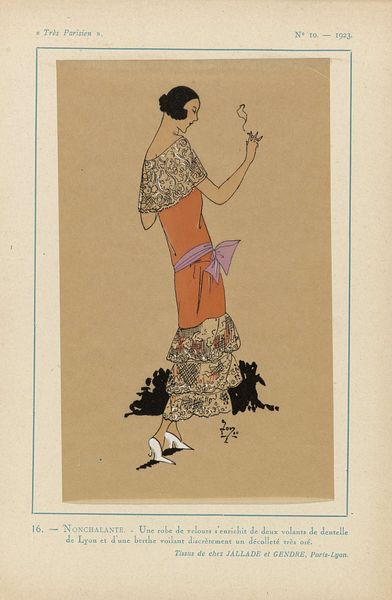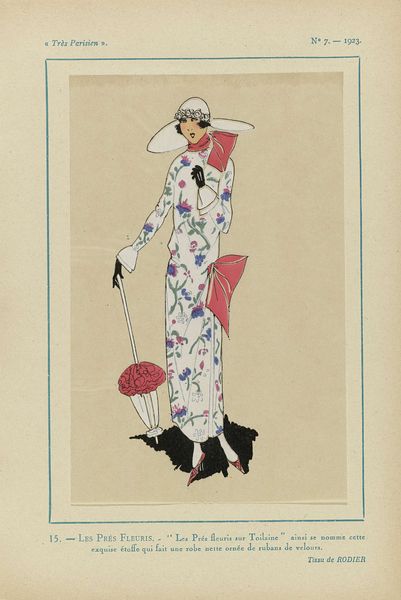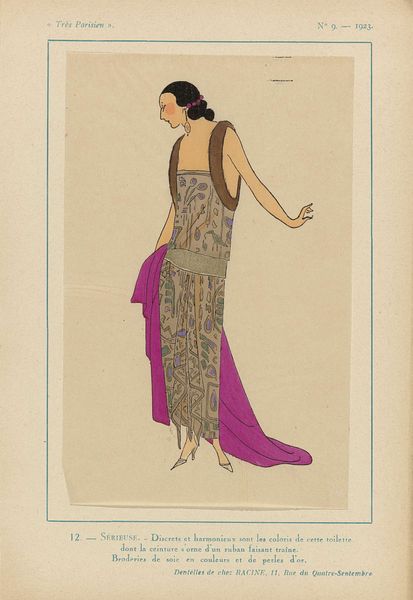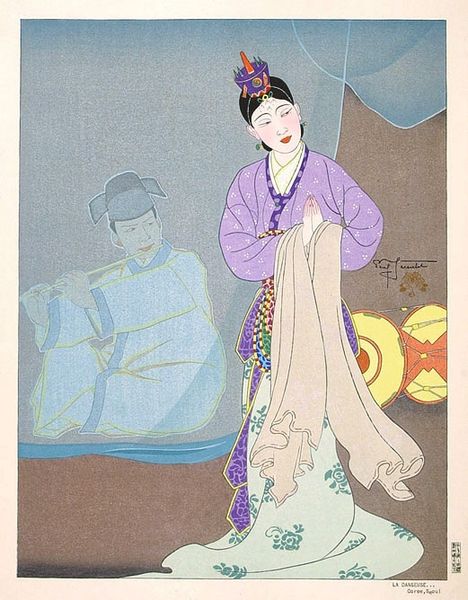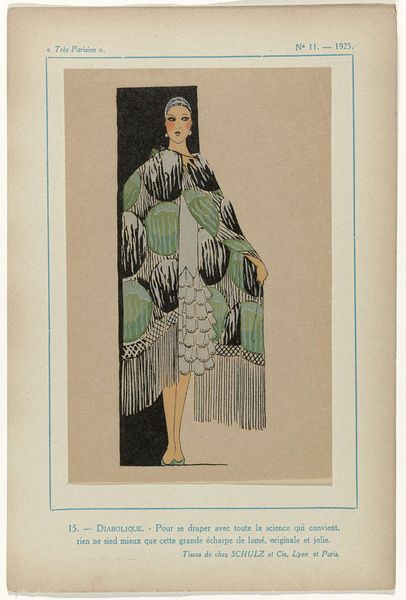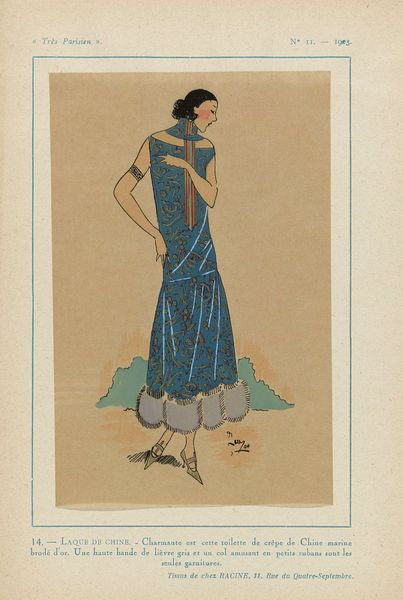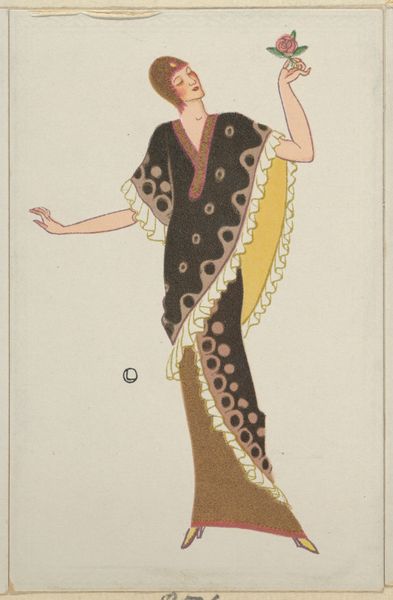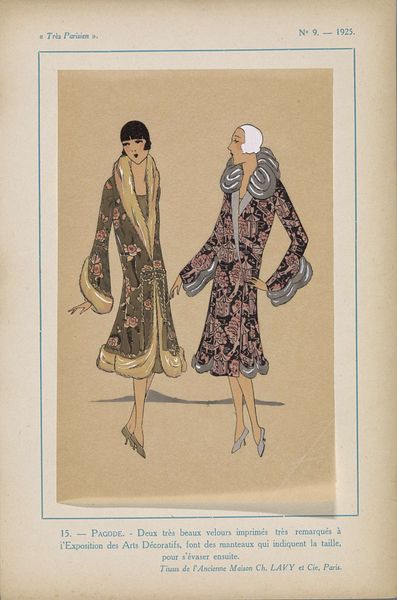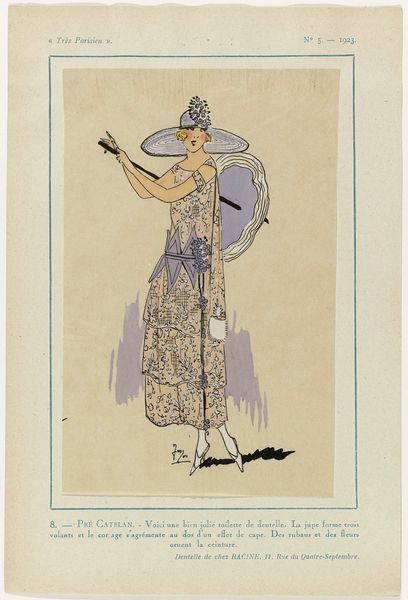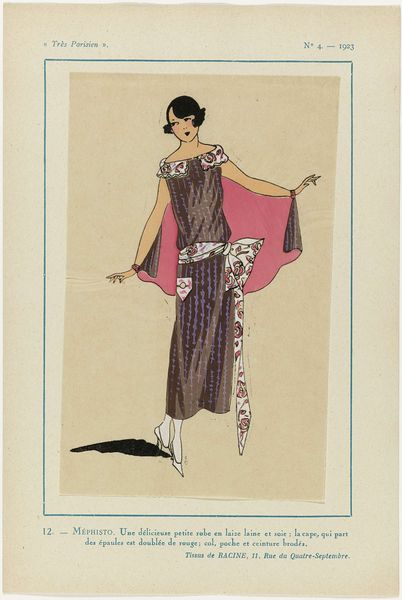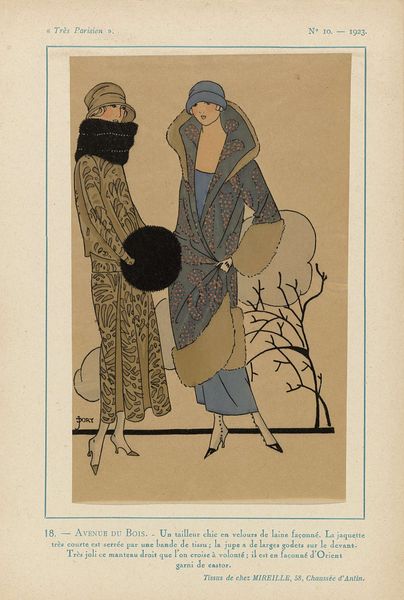
Très Parisien, 1923, No 11: 7. - FLEUR CHINOISE. - Ce manteau brodé... 1923
0:00
0:00
anonymous
Rijksmuseum
drawing, paper
#
portrait
#
art-deco
#
drawing
#
pastel soft colours
#
pastel colours
#
paper
#
watercolour illustration
Dimensions: height 269 mm, width 180 mm
Copyright: Rijks Museum: Open Domain
Editor: This is "Très Parisien, 1923, No 11: 7 - FLEUR CHINOISE. - Ce manteau brodé..." by an anonymous artist, housed at the Rijksmuseum. It’s done with drawing on paper, and the colours are wonderfully muted, almost faded, which really emphasizes the garment. How would you interpret the artistic choices in this illustration? Curator: Let's consider the conditions of its creation. In the 1920s, mechanization was transforming textile production. This piece, depicting a heavily embellished garment, presents a tension. On one hand, embroidery represents handcraftsmanship, likely positioned as a luxury. On the other, it’s published in a periodical – a product of industrial printing. It makes you wonder: who was the target audience and what kind of consumerism was being encouraged by showcasing such a handcrafted piece via industrialized printing means? Editor: That's a really interesting perspective; I hadn’t thought about the contradiction of the image’s production and its content! Curator: Absolutely! We can’t ignore the material reality of the image itself. The pastel soft colours used were readily available and affordable at the time, making reproduction for mass consumption cheaper, unlike expensive vibrant pigments. It reflects a desire to evoke luxury, while strategically embracing practicality in its own manufacture and distribution. Editor: So, even the choice of media and its relative accessibility speaks to the changing landscape of production and consumption? Curator: Precisely! The artwork challenges us to consider the value judgements we impose on "high" art versus "low" craft, as this "illustration" exists comfortably between the two. Editor: I'm now looking at this image in a completely different light. It's less about the aesthetic and more about what it represents in the broader cultural context. Curator: Precisely, seeing the labour involved is also very important!
Comments
No comments
Be the first to comment and join the conversation on the ultimate creative platform.
